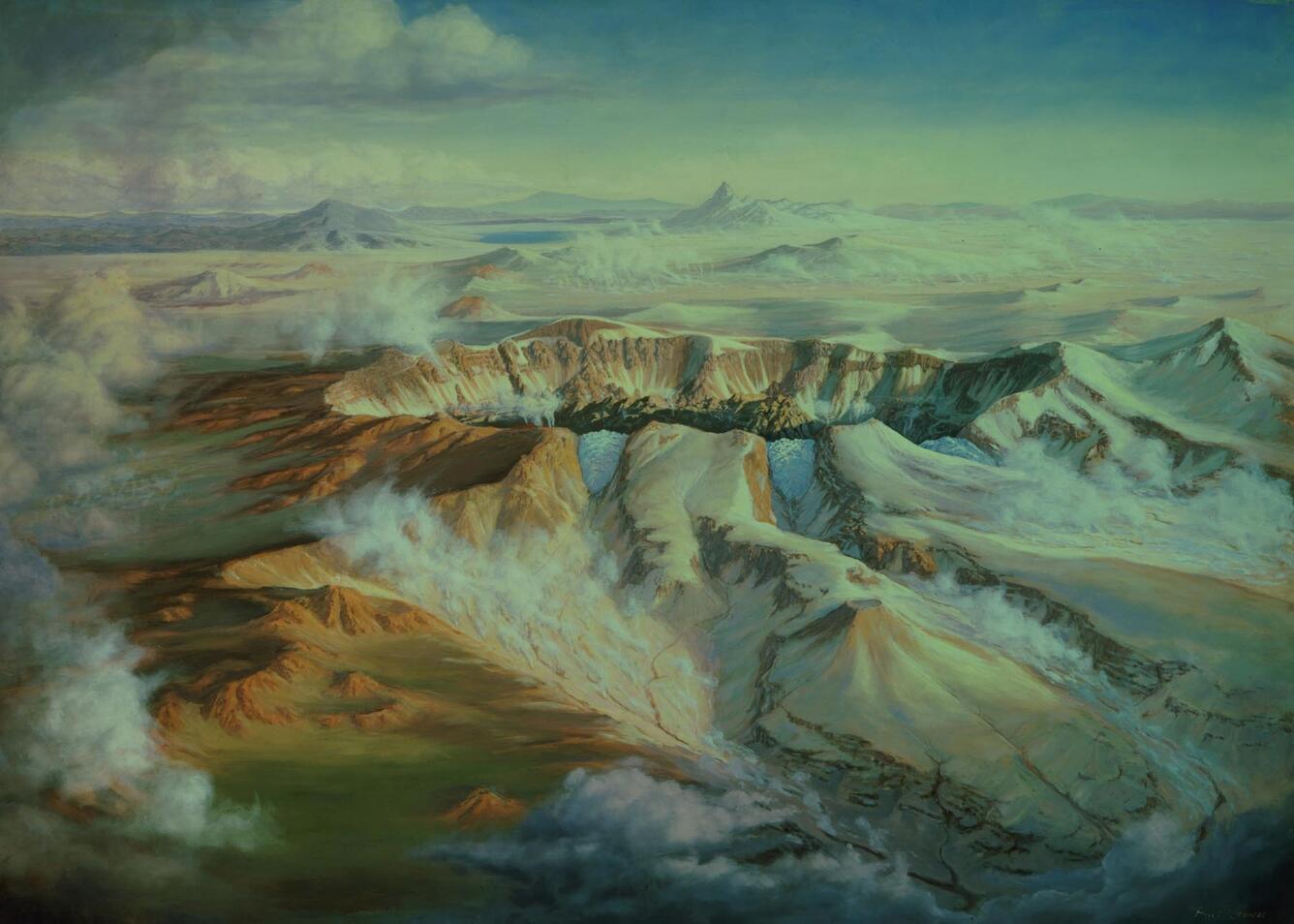The climactic eruption of Mount Mazama devastated the terrain for tens of kilometers from the volcano, sent pyroclastic flows as far as 70 km (43 mi) down every valley heading on the volcano, and produced ash fall throughout much of the Pacific Northwest and parts of southern Canada.

The climactic eruption of Mount Mazama devastated the terrain for tens of kilometers from the volcano, sent pyroclastic flows as far as 70 km (43 mi) down every valley heading on the volcano, and produced ash fall throughout much of the Pacific Northwest and parts of southern Canada. The 7,700 year ago eruption occurred in two phases:
- Eruptive activity began from a single vent on the northeast side of the volcano as a towering Plinian column of tephra that reached 50 km (30 mi) high, which was carried by winds for very long distances, resulting in the widespread ash-fall deposit. So much magma erupted that the vent widened and the eruption column collapsed producing pyroclastic flows that deposited welded tuff in valleys on the north and east flanks of Mazama.
- As the eruption proceeded, circular cracks, or ring-vents, opened around the peak. Activity continued to feed numerous eruption columns through these more dispersed vents, which produced highly energetic pyroclastic flows. Deposits from these flows partially filled the valleys around Mount Mazama with up to 100 m (300 ft) of pumice and ash. As more magma was erupted and the magma reservoir nearly emptied, the collapse of the central portion of the volcano progressed resulting in an 8–10 km (5–6 mi) diameter and 1.2 km (0.7 mi) deep caldera.
Since the eruption ended, erosion has exposed cross-sections through the thick valley-fill deposits where colored layers are now visible. The lighter material on the bottom erupted before, and has higher silica content than, the darker material toward the top. Today, this is recognized as a type example of a deposit that originated from a compositionally zoned magma chamber – the chamber emptied from top to bottom, andmagma with higher silica content erupted before more primitive, lower-silica magma.
The climactic eruption of Mount Mazama devastated the terrain for tens of kilometers from the volcano, sent pyroclastic flows as far as 70 km (43 mi) down every valley heading on the volcano, and produced ash fall throughout much of the Pacific Northwest and parts of southern Canada.

The climactic eruption of Mount Mazama devastated the terrain for tens of kilometers from the volcano, sent pyroclastic flows as far as 70 km (43 mi) down every valley heading on the volcano, and produced ash fall throughout much of the Pacific Northwest and parts of southern Canada. The 7,700 year ago eruption occurred in two phases:
- Eruptive activity began from a single vent on the northeast side of the volcano as a towering Plinian column of tephra that reached 50 km (30 mi) high, which was carried by winds for very long distances, resulting in the widespread ash-fall deposit. So much magma erupted that the vent widened and the eruption column collapsed producing pyroclastic flows that deposited welded tuff in valleys on the north and east flanks of Mazama.
- As the eruption proceeded, circular cracks, or ring-vents, opened around the peak. Activity continued to feed numerous eruption columns through these more dispersed vents, which produced highly energetic pyroclastic flows. Deposits from these flows partially filled the valleys around Mount Mazama with up to 100 m (300 ft) of pumice and ash. As more magma was erupted and the magma reservoir nearly emptied, the collapse of the central portion of the volcano progressed resulting in an 8–10 km (5–6 mi) diameter and 1.2 km (0.7 mi) deep caldera.
Since the eruption ended, erosion has exposed cross-sections through the thick valley-fill deposits where colored layers are now visible. The lighter material on the bottom erupted before, and has higher silica content than, the darker material toward the top. Today, this is recognized as a type example of a deposit that originated from a compositionally zoned magma chamber – the chamber emptied from top to bottom, andmagma with higher silica content erupted before more primitive, lower-silica magma.


